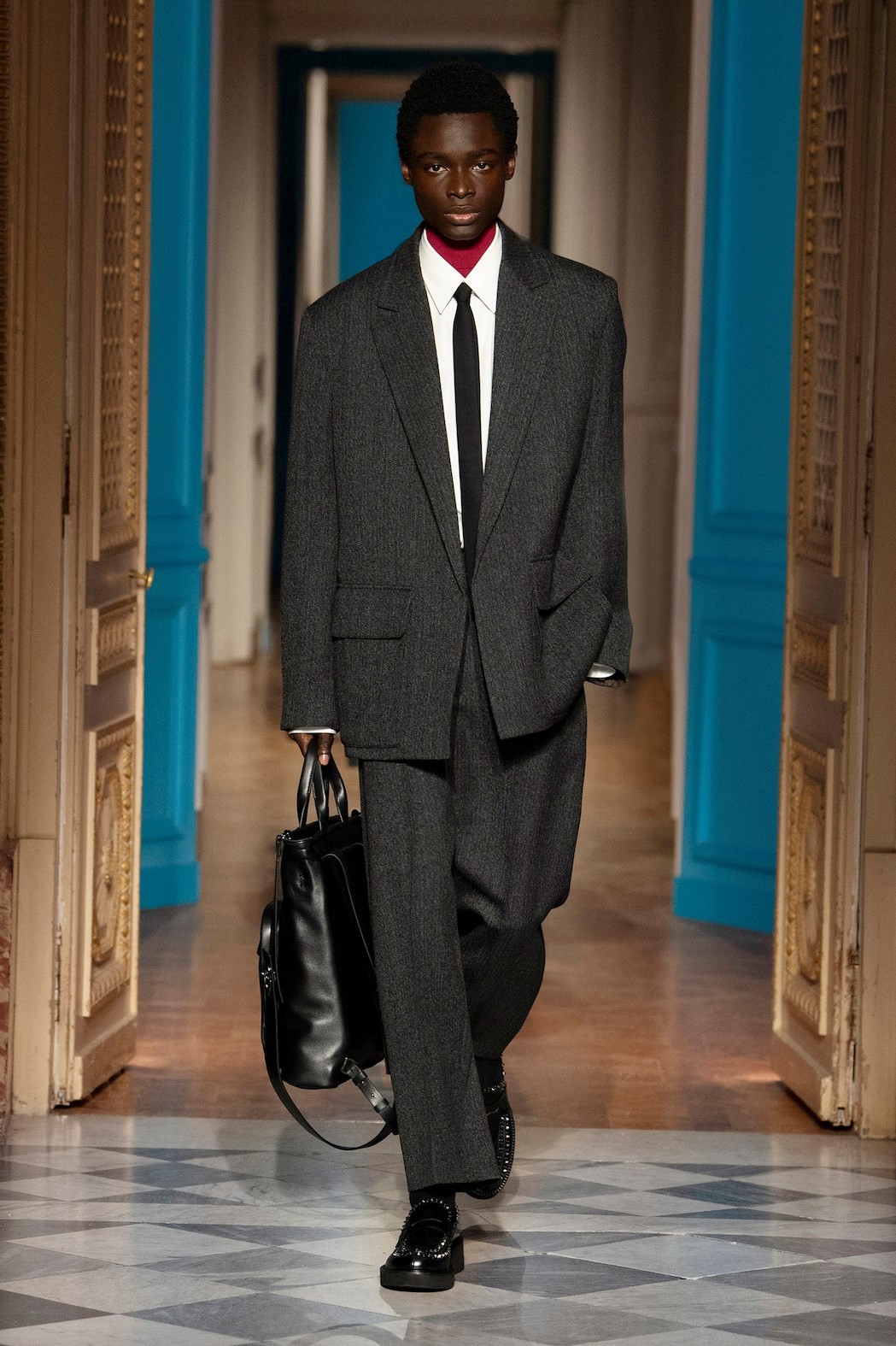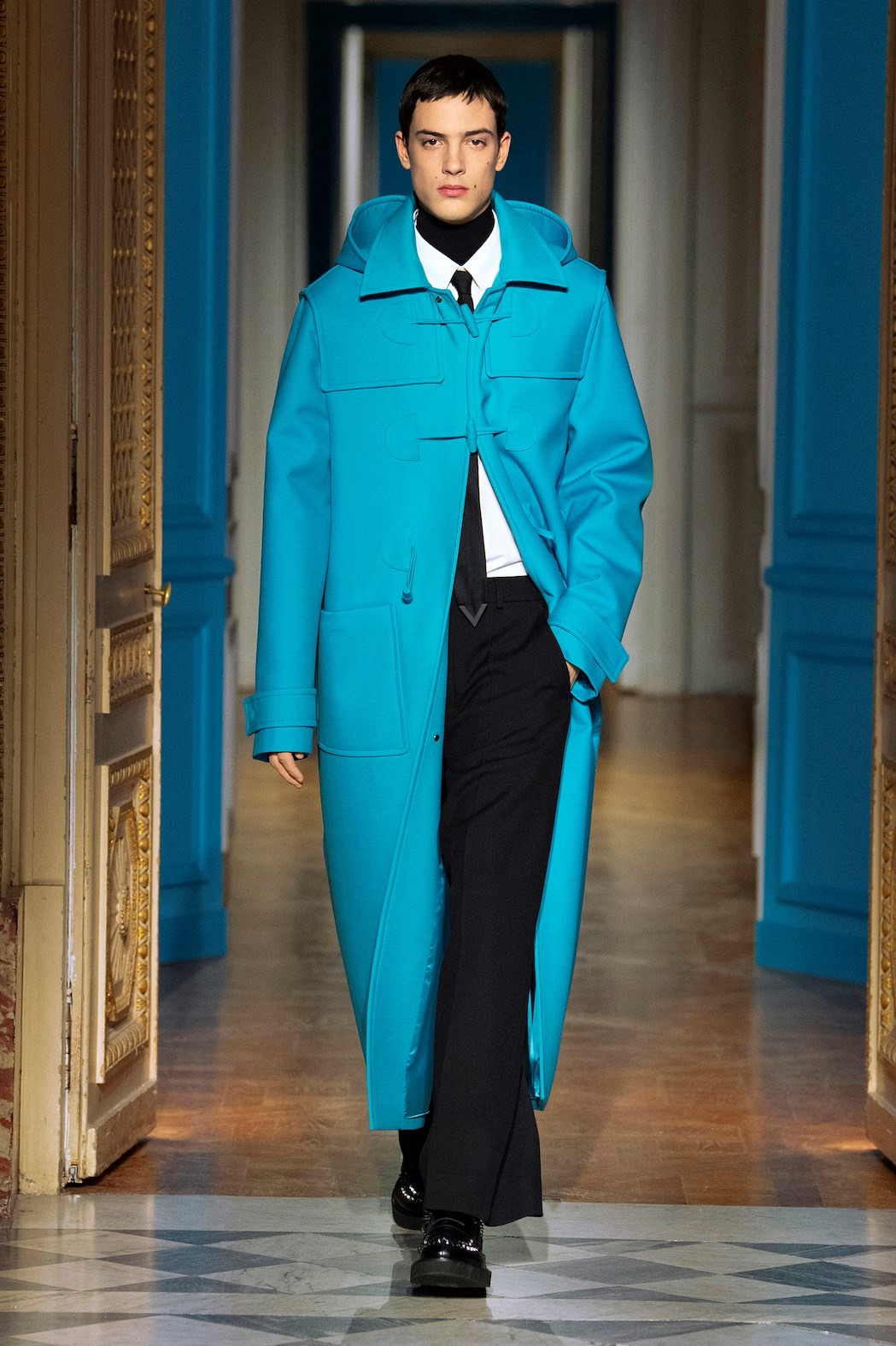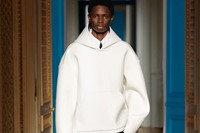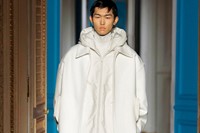If any designer understands the power and impact of colour, it’s Pierpaolo Piccioli of Valentino. In 2022, he invented his own Pantone shade of eye-socking shocking pink and harnessed it to a collection whose reverberations can still be felt across fashion – both creatively, and marketing-wise. Valentino has always owned red, now it kind of owns pink, too. For his Autumn/Winter 2024 menswear show, he decided to do the same with blue, which we all think of as quintessentially masculine today, but which actually has a history more storied and complex. Indeed, blue used to be feminine – the Madonna wears blue, after all – while F Scott Fitzgerald has his Jay Gatsby sporting a flashy (and, in 1925, slightly trashy) pink suit. It’s only post-war that pink came to signify girls, and blue boys.
But Piccioli wanted to deconstruct blue – it wasn’t about a collection awash in a single colour, but about unpicking its ramifications and significations. The idea was to take what we perceive as fundamentally masculine and to challenge it, and in doing so to challenge our ideas of men. It’s a process that is already well underway culturally, Piccioli allows – over the past two decades our definition of ‘manly’ has profoundly evolved, as have the clothes we dress men in. And Piccioli decided to celebrate that by applying these new dress codes to a man’s wardrobe rooted in tradition.
It also keys into Piccioli’s deep interest in the sensibilities of new generations. Almost a year ago, he showed a collection titled Black Tie, about the new appeal of traditional tailoring for generations freed from the notion of the suit as a uniform, and therefore hegemonic shackles to erase individuality. Dressing in a suit, he reasoned, is something young people want to do. The same is true here, in the reconsideration of what we denote as ‘mass’ by Gen Z (and younger).


Think of masculine, even as applied to feminine dress, and the idea is sharpness, power, strength – often asserted through tailoring. A masculine shoulder is wide and swaggering, maybe shoulder-padded. It’s the jutting shapes of Yves Saint Laurent and, later, those linebacker silhouettes proposed by Claude Montana and Thierry Mugler in the 80s. Piccioli’s shoulders were emphatic, yet they had a gentleness, a drape – “grace” was the word he used. He also applied the exceptional Valentino Altorillevo (High Relief) technique – a new method of applying shaped fabric that makes the result resemble material carved into elaborate shapes – to the sleeve head and shoulder blades of coats, opening up the fabric of the jacket at points that are, traditionally, the focal-point of padding and buttressing to armour a man against the world. Here, they were fragile, opening literal windows onto the body beneath.
Throughout, the idea was to relax, to soften men. Tailoring was scissored open and draped around the body, coats multi-layered to give easy movement. Shoulders sloped, trousers puddled. And elaborate embroideries were keyed into the surfaces of fabric, giving a subtle lustre rather than over glitter or sparkle. Subtle was the message overall, subtle glamour, subtle masculinity, and a subtle subversion of anticipated codes.
If clothes maketh the man, here they made the gentle man. Which is an undercurrent of the Autumn/Winter 2024 season as a whole. Valentino did it best.






